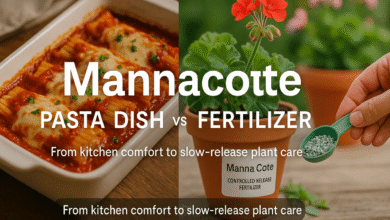Discovering Çeciir: A Deep Dive into Turkey’s Hidden Culinary and Cultural Gem

Few terms encapsulate culinary delight and cultural depth in Turkish culture’s vast and vibrant mosaic, like çeciir. While this word might not ring a bell for everyone outside of Turkey, it holds a unique and cherished place in the heart of Turkish tradition. In this comprehensive exploration, we delve into the meaning, origins, and multifaceted nature of çeciir, illuminating why this term deserves recognition beyond its regional roots.
What is Çeciir?
At its core, çeciir is a traditional Turkish stew made primarily from chickpeas. This hearty dish is a staple in many Turkish households and a symbol of comfort, family, and heritage. It is especially popular in Turkey’s eastern and southeastern regions, where culinary traditions are deeply rooted in history and community.
The term çeciir itself likely derives from older dialects or regional pronunciations of “nohut,” the Turkish word for chickpeas. Over time, this dish has evolved, incorporating local spices, meats, and cooking techniques, which vary from village to village.
The Ingredients and Preparation of Çeciir
Traditional çeciir is celebrated for its simplicity and depth of flavour. The base ingredients typically include:
- Chickpeas (soaked overnight for tenderness)
- Lamb or beef (optional, but common in many regions)
- Onions and garlic
- Tomato paste or fresh tomatoes
- Olive oil
- Spices such as cumin, paprika, black pepper, and salt
The preparation begins by sautéing onions and garlic in olive oil until golden. Then, meat is added and browned for flavour. Tomato paste follows, creating a rich base, and the pre-soaked chickpeas are introduced along with water or broth. The stew simmers until the chickpeas are tender, and the flavours meld into a comforting, aromatic dish. It is often garnished with parsley and served with rice or fresh bread.
Nutritional Benefits of Çeciir
Beyond its taste, çeciir is highly nutritious. Chickpeas are a powerhouse of protein, fibre, vitamins, and minerals. They support digestive health, regulate blood sugar, and promote heart health. When combined with meat, çeciir becomes a complete meal, offering a balanced profile of essential nutrients.
Cultural Significance of Çeciir
In Turkish culture, food is more than sustenance; it is a medium of expression and a vehicle for preserving heritage. Çeciir, with its humble ingredients and rich flavours, is often prepared for family gatherings, communal meals, and festive occasions. It embodies the spirit of sharing and community central to Turkish hospitality.
Moreover, preparing çeciir is often a communal activity, especially in rural areas. Families come together to cook, each member contributing to the process, strengthening familial bonds and passing culinary knowledge down through generations.
Çeciir in Literature and Folklore
Interestingly, çeciir has found its way into Turkish folklore and local stories, often symbolizing abundance and the warmth of home. In some tales, a pot of çeciir is likened to a treasure chest—simple on the outside but rich in content. These narratives highlight the dish’s role as a food and cultural icon.
Modern Takes on Traditional Çeciir
While traditional recipes are still widely cherished, modern chefs and home cooks have started to put their spin on çeciir. Some add vegetables like carrots and potatoes, while others experiment with vegan versions, using mushrooms or eggplant to replace meat. The adaptability of çeciir allows it to fit into contemporary dietary preferences without losing its essence.
How to Make Çeciir at Home
Want to try your hand at making çeciir? Here’s a simple recipe to get you started:
Ingredients:
- 2 cups dried chickpeas (soaked overnight)
- 250g lamb or beef, cubed
- 1 large onion, chopped
- 3 cloves garlic, minced
- 2 tablespoons tomato paste
- 4 cups water or beef broth
- 2 tablespoons olive oil
- 1 teaspoon cumin
- ½ teaspoon paprika
- Salt and pepper to taste
- Fresh parsley for garnish
Instructions:
- Heat olive oil in a large pot. Add onions and garlic, cooking until golden.
- Add meat and cook until browned.
- Stir in tomato paste and spices, cooking for 2 minutes.
- Add chickpeas and broth. Bring to a boil, then reduce to a simmer.
- Cover and cook for 1.5 to 2 hours or until chickpeas are tender.
- Garnish with parsley and serve with rice or bread.
Conclusion: The Enduring Legacy of Çeciir
Çeciir is more than just a dish; it symbolises Turkey’s culinary richness and cultural diversity. Its ability to adapt while maintaining traditional roots makes it a beloved part of Turkish cuisine. Whether exploring world cuisines, seeking nutritious meals, or simply curious about global traditions, çeciir offers a flavorful and meaningful experience.
FAQS
What is çeciir, and where does it originate from?
Çeciir is a traditional Turkish stew made primarily with chickpeas, often accompanied by meat and aromatic spices. It originates from Turkey’s eastern and southeastern regions and is deeply rooted in local culinary and cultural traditions.
Is çeciir suitable for vegetarians or vegans?
While traditional çeciir includes meat, it can easily be adapted for vegetarians and vegans by omitting the meat and using ingredients like mushrooms, eggplant, or hearty vegetables to add depth and flavour.
How is çeciir connected to Turkish culture and traditions?
Çeciir is packed with nutrients due to its chickpea base, which is rich in protein, fibre, and essential minerals. It becomes a wholesome, balanced meal that supports digestive and heart health when paired with meat or vegetables.
How is çeciir connected to Turkish culture and traditions?
Çeciir is more than a dish—it represents hospitality, heritage, and community. Often prepared during family gatherings and celebrations, it symbolises togetherness and cultural continuity in many Turkish households.
Can çeciir recipes vary across Turkey?
Absolutely! The recipe for çeciir can differ significantly from region to region, even in households. Local spices, ingredients, and cooking techniques influence its preparation, making each version unique.





